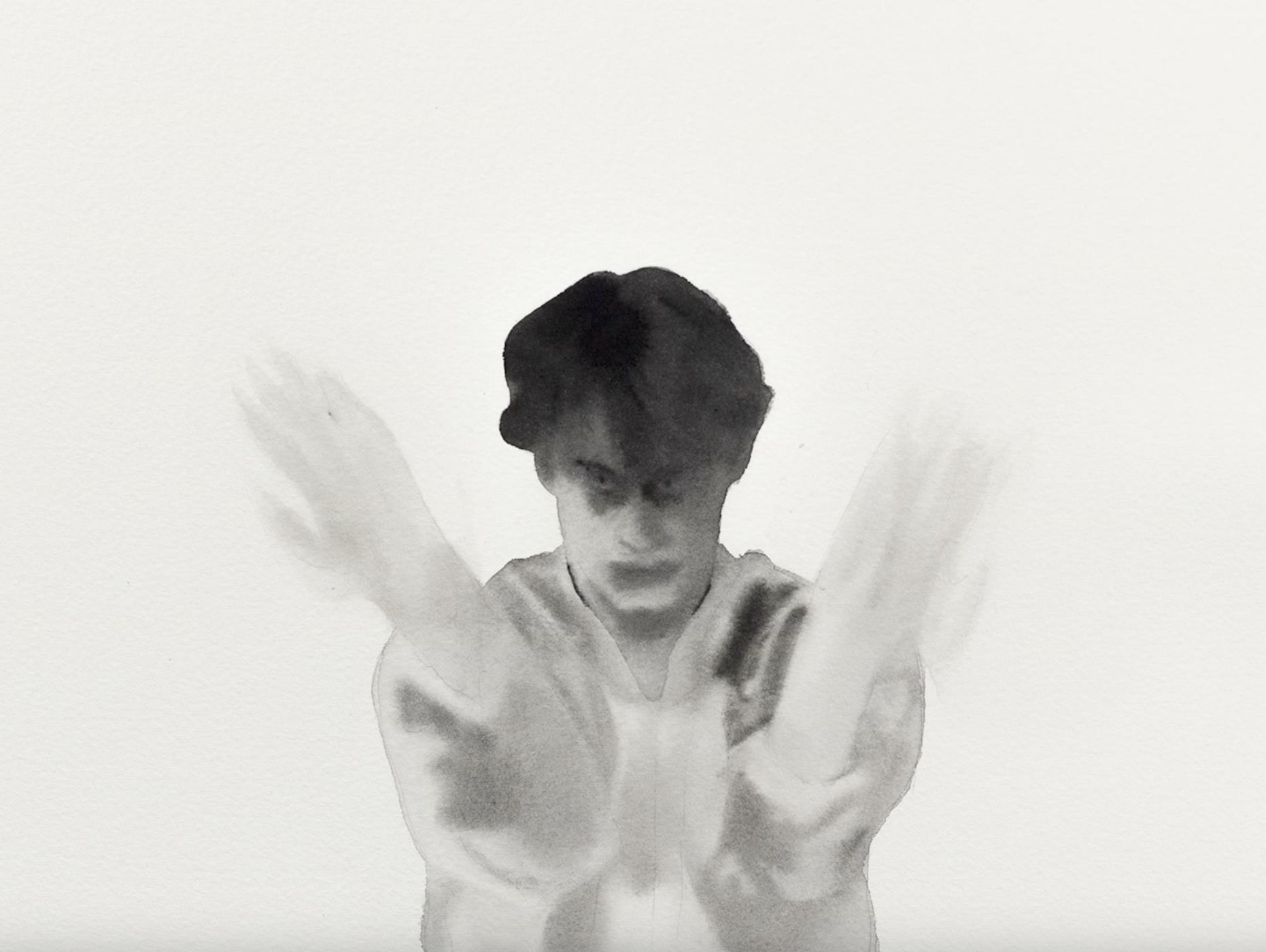Movement 4:3

Known for her large scale – almost monumental – aquarelle paintings, Maria Nordin explores the borderline between body and surrounding. For the artist, the human body is a universal actuality, a starting point for everything she does in her studio.
The bodies in her paintings – sitting, standing, leaning, lying down, falling– often appear to be contemplatively watching, each other, their viewer or something beyond the paper that contains them. There is a stillness to the bodies, even those that are caught mid movement. Perhaps the pale, almost tentative colors and the extraordinary technique Nordin possesses creates that stillness.
Movement for 4:3 is a black and white animation, the premise for which is a movement contained to a specific format. Here the format is 4:3 – the standard format for old tv-screens. The animation shows a person voguing; rhytmically moving their arms in subsequent poses, looking straight ahead though the screen.
Voguing is a highly stylized type of dance originating in Harlem, New York. It was created by Black and Latino LGBTQI+ communities during drag competitions known as “balls” in the 1980s. Popularized through Madonnas “Vogue” and recent films and TV-shows, voguing became the trademark dance style New York’s ballroom circles, and was an expression of a subversive queer subculture which found power and inspiration in the stylized poses in fashion magazines such as Vogue.
Movement 4:3 began as a series of aquarelle paintings, also collected in a book with the same title.